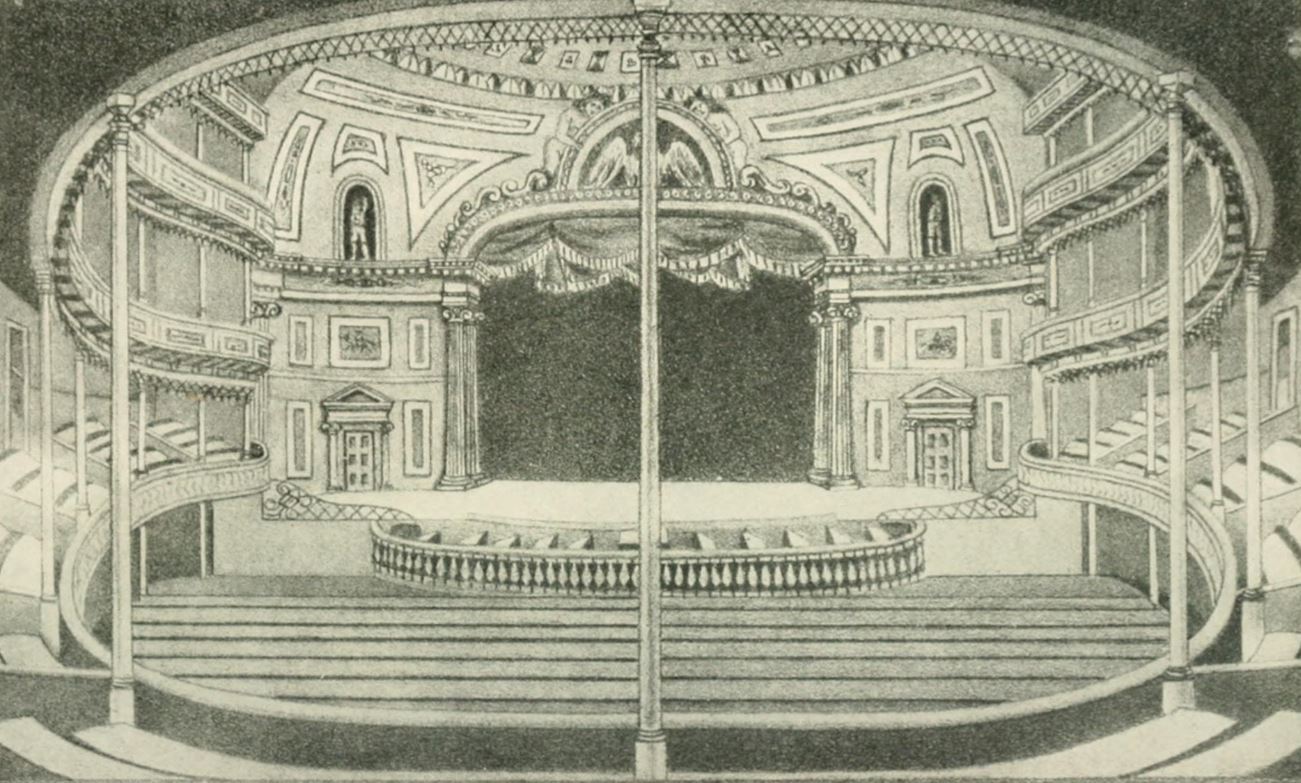

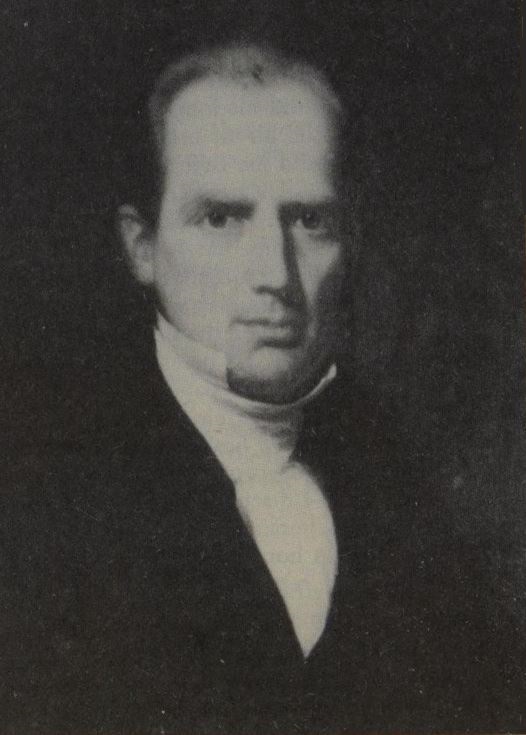
Charles Grandison Finney – Father of modern revivalism and the leading figure of the Second Great Awakening
Introduction
Charles G. Finney’s (1792-1875) unique methods of evangelism earned him the title of the “father of modern revivalism.” His methods paved the way for other mass-evangelists, like Dwight L. Moody, R. A. Torrey, John W. Chapman, Billy Sunday, and Billy Graham, who adapted and built upon Finney’s methods.
Background Information
With this revival account being one in a sequence of revivals during the life of Charles G. Finney, we recommend first reading our accounts of the initial revivals he was involved with in the northern and central part of New York State:
► 1824 Evans Mills German Settlement Revival
► 1824 Antwerp, New York Revival
► 1824 Revival at Perch River and Other Locations
► 1825 Revival in Gouverneur, New York
► 1825 Revival in De Kalb, New York
► 1825 Revival in Western, New York
► 1825 Revival in Rome, New York
► 1826 Revival in Utica, New York
► 1826 Revival in Auburn, New York
► 1826-1827 Revival in Troy, New York
► 1827 New Lebanon & Stephentown Revivals
► 1827-1829 Revival at Wilmington and Philadelphia
► 1829 Reading, Pennsylvania Revival
► 1829 Lancaster, Pennsylvania Revival
► 1829 Columbia, New York Revival
► 1830 New York City Revival
► 1830-1831 Rochester, New York Revival
► 1831 Revivals in Auburn, Buffalo, Providence, & Boston
From Boston to New York City
Charles Finney had been involved in a revival in Boston, Massachusetts, in the early part of 1831, and after almost 10 years of serving as an evangelist, he had become greatly fatigued. He rarely had taken a few days or a few weeks off for rest. With his family having grown to three children, it was also challenging for them all to travel together.
The newly established Second Free Presbyterian Church in New York made a proposal for Finney to come there and become their pastor. The congregation said that they would obtain the Chatham Garden Theater and set it up as a church that would seat 2,500 if he would come.
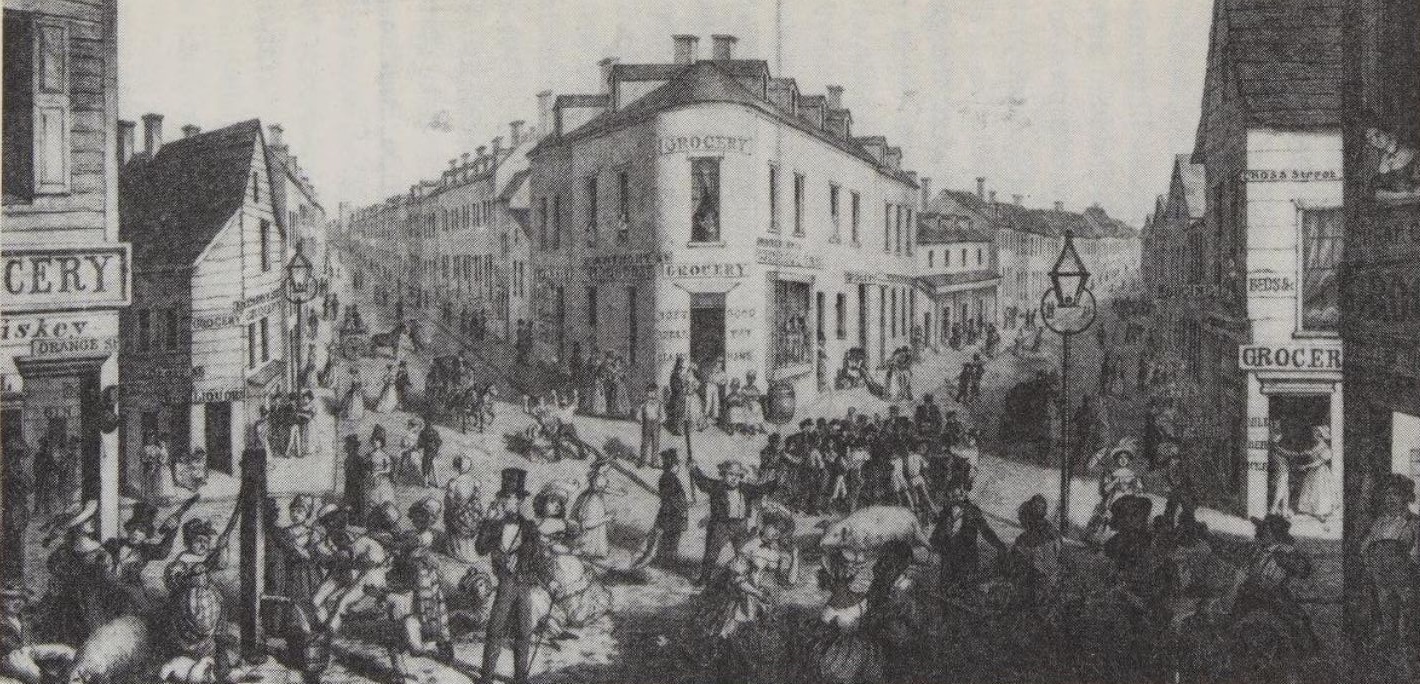
Five Points neighborhood in New York, where the Chatham Street Chapel was located
The theater was in a “highly discreditable” area of the city, or in “the heart of the most irreligious population of New York.” This notorious location was known as Five Points, located in southern Manhattan, and was believed to be “the most depraved few acres in North America.”
With Finney’s declining health, and fatigue from frequent relocations with his family, he accepted the call from the Second Free Presbyterian Church and left Boston in April 1832 to settle in New York City.
Inside of Chatham Garden Theater,
which became Chatham Street Chapel, New York City
(also known as Second Free Presbyterian Church)
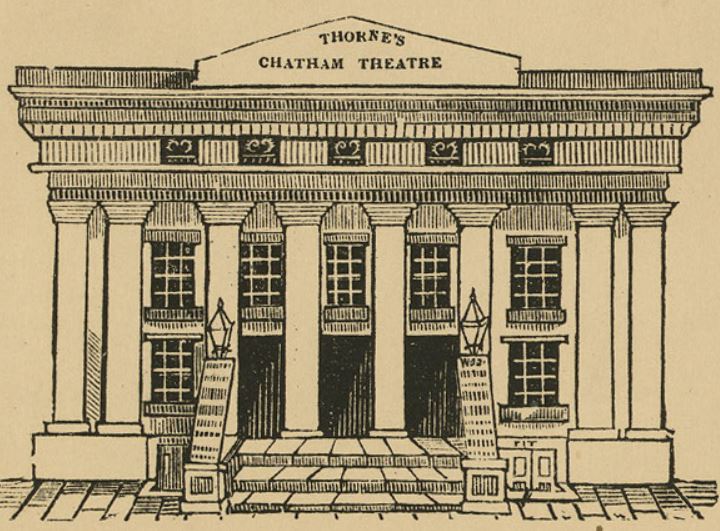
Outside of Chatham Garden Theater
Results in New York City Were Instantaneous
Immediately upon Finney’s arrival in New York, the Spirit of the Lord was poured out and they experienced a powerful revival that spring and summer, and the moral change in that rough community surrounding that church was profound, as one man indicated:
Within three months every grogshop in the area had to close.
Conversion Results of the First Year
In March 1833, Finney wrote about the conversions experienced during his first year in New York:
Between 4 & 500 whose names & places of residence we know…, besides we have reason to believe that many more, whom we do not know have been converted.
Ministry Priorities
A “goodly number” of people were converted every week, and it was only accomplished by keeping a prioritized focus on evangelism. Here are some of the steps that helped them in this work.
► They held meetings 2 or more times each week for ministering to new Christians or those wanting to become Christians.
► The congregation was persistently praying.
► There was unity among the people.
► Training was conducted in evangelism, and it was carried out well.
► Going house to house, invitations were made to attend the services. Informational leaflets were used in conjunction with inviting people face-to-face.
► Bands of young zealots were sent out 2 by 2, visiting theaters and bars, and doing so with great success (theaters at this time were also regularly used as places of prostitution).
► Intoxicated men were picked up, taken to meetings, and they returned home converted.
► During services, members of the church were strategically seated throughout the building and were directed to keep an eye on people who would appear to be affected by the sermon. They were then to speak directly with that person after the service concluded. People experiencing conviction of sin would then be taken to a side room where the workers could “secure the conversion of sinners.” Using this method led to “the conversion of many souls.”
A writer who witnessed this passionate evangelism said of Finney:
Probably no man, since the days of Whitfield [sic], ever stirred the minds of men in this city so widely and deeply, in their relations to practical and personal religion, as this great and good man. Preaching and praying were his only weapons. He surrounded himself with an atmosphere of prayer, and a body of devoted, praying, and working Christians, male and female…
Rest at Sea and the Spirit of Prayer
On January 20, 1834, Finney departed on a 6-month voyage to the Mediterranean Sea, specifically to get much-needed rest. While on this voyage, in the early part of July, there came upon him the “Spirit of prayer.”
This prayer was him discharging the burden of his soul in regard to the lack of evangelists available to assist pastors with the work of revivals.
Of that time in prayer, Finney said:
My soul was in an utter agony. I spent almost the entire day in prayer in my state room; or walking the deck in such agony as to wring my hands, and almost to gnaw my tongue, as it were, with pain in view of the state of things. In fact I felt crushed with the burden that was on my soul.
After a day of unspeakable wrestling and agony in my soul, just at night the subject cleared up to my mind. The Spirit led me to believe that all would come out right, and that God had yet a work for me to do.
Finney’s Lectures on Revivals
The answers to Finney’s prayers at sea came in the form of a series of lectures that he gave at the Chatham Street Chapel. He gave one lecture per week, from December 1834 till May 1835. These lectures were for the purpose of providing articles for a publication titled “The New York Evangelist.” Those printed lectures became so popular that they were published in a book in 1835, and called “Lectures on Revivals of Religion.” There were 12,000 copies printed, and they sold out immediately.
The Lectures Were a Spark for Revivals
The results of Finney’s Lectures had dramatic results:
When they were first published in “The New York Evangelist” the reading of them resulted in revivals of religion in multitudes of places throughout this country.
As they were translated into an unknown number of languages, and circulated far and wide, they became tools for promoting revivals in
England, and Scotland, and Wales, on the [European] Continent in various places, in Canada east and west, in Nova Scotia, in some of the islands of the sea—and in fact throughout the British colonies and dependencies.
Other Effects of The Lectures
During Finney’s visits to England and Scotland, he often encountered those who said they had become ministers due to The Lectures, and he also met a large number of ministers and others who
had been converted, directly or indirectly, through the instrumentality of those revival lectures.
The Lectures, a Product of Agonizing Prayer
Finney indicated that The Lectures, as well as their success in being read by countless thousands, came through Holy Spirit-inspired prayer during his voyage at sea in the summer of 1834. He also mentioned that those seasons of prayer were common throughout his life.
It has always been my experience, when I have a day or season of great travail of soul for any object, if I pursue the subject, and continue my pleadings until I prevail and my soul is at rest—that in answer to such prayers God not only gives me what I ask, but exceedingly above all that I at the time had in my mind.
He also made it clear about those times of prayer:
Nobody but myself can appreciate the wonderful manner in which those agonizing throes of my soul on that occasion have met with the divine response. Indeed it was God the Holy Ghost making intercession in me. The prayer was not properly mine, but the prayer of the Holy Spirit.
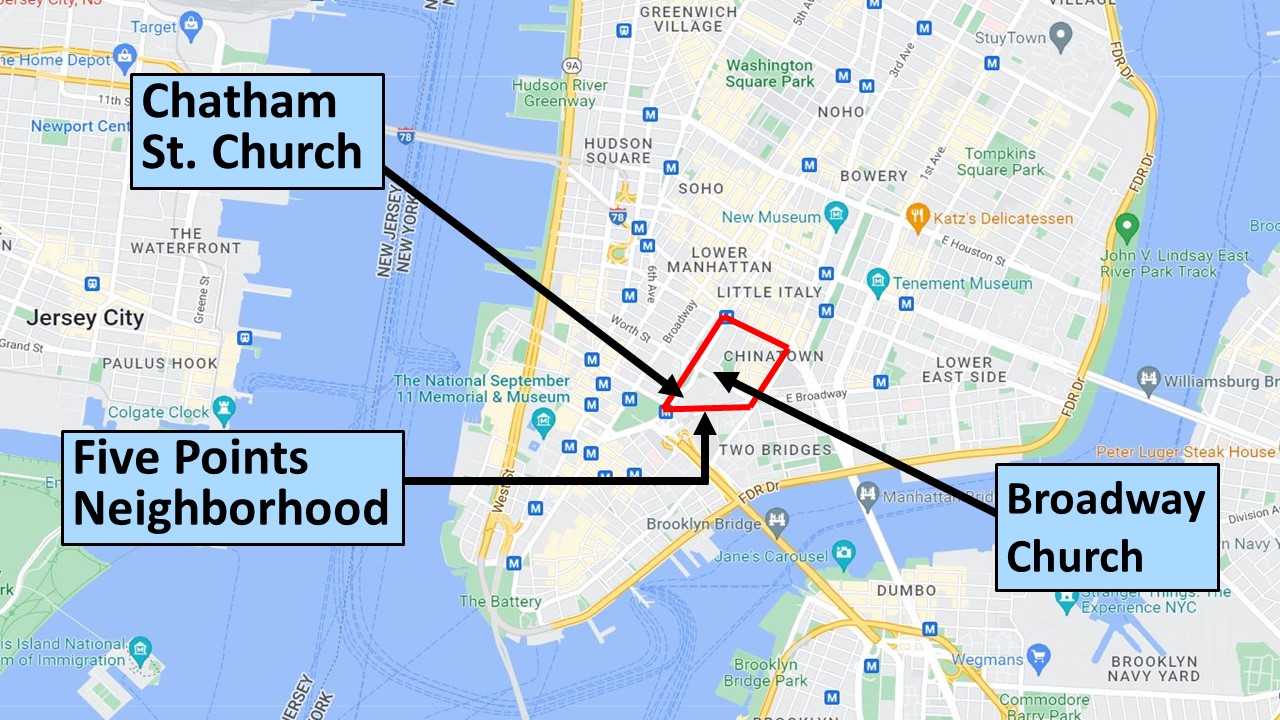
Invitation for Professorship at Oberlin College
In 1835 Finney received a proposal to become a professor of theology at The Oberlin Collegiate Institute. The proposal involved him spending 6 months out of the year in Oberlin, and the other 6 months at his church in New York.
When the congregation in New York agreed to this proposal, Finney then made plans to spend his winters in New York and his summers at Oberlin, Ohio.
When all these arrangements were made, Finney moved his family to Oberlin, arriving in May 1835.
Tabernacle on Broadway Street
The Free Presbyterian Churches in New York initiated a plan to build another church on Broadway Street, with the intention of having Finney become the pastor. This church was designed to Finney’s specifications, and had a seating capacity of 3,000. As the Broadway Tabernacle was under construction, Finney continued to preach at Chatham Street Chapel.
Once the Broadway Tabernacle was completed, Finney was installed as the pastor on April 10, 1836.
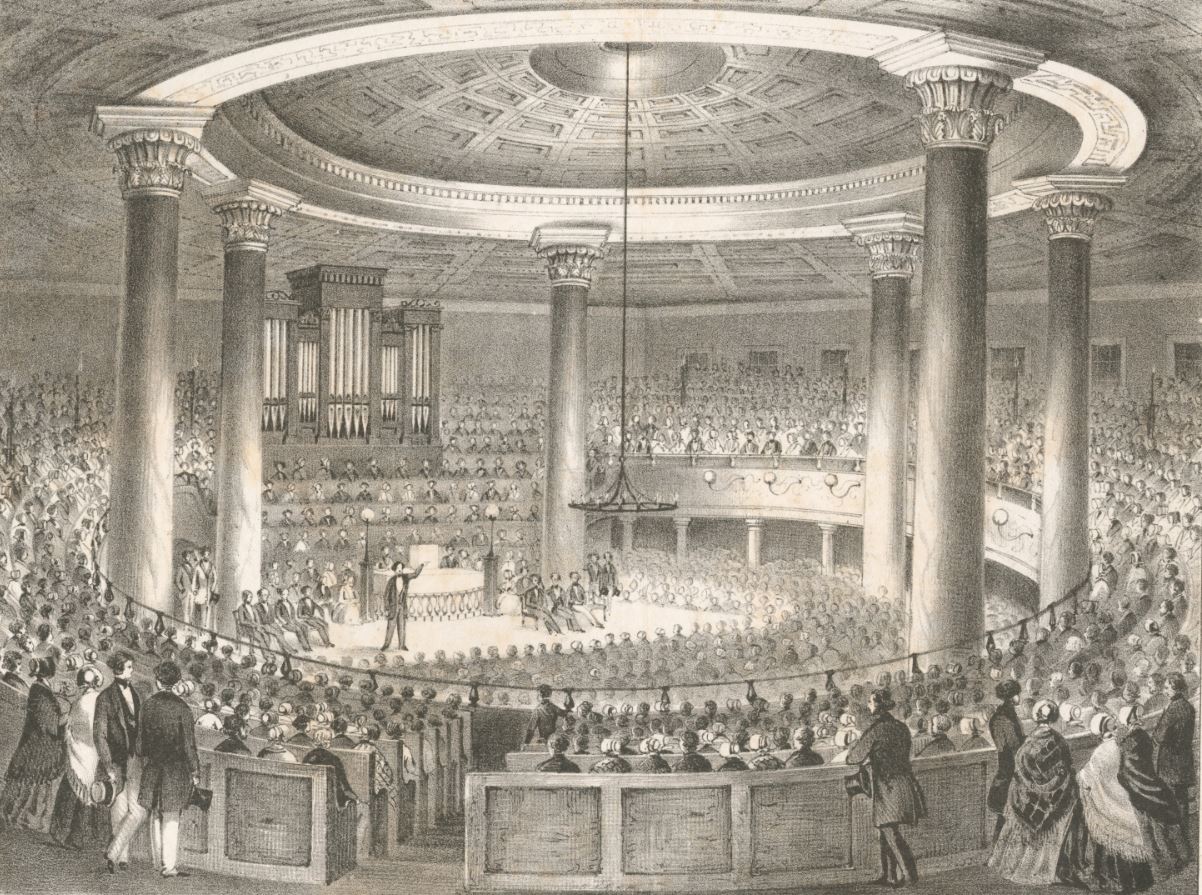 Broadway Tabernacle
Broadway Tabernacle
Finney Revival Account List
Access all accounts of Finney’s revivals using this link.
Primary Sources
► Chapter XXIII Labors and Revival in New York City: The Memoirs of Charles G. Finney by Charles G. Finney
► Lectures on Revivals of Religion by Charles G. Finney
► The Memoirs of Charles G. Finney: The Complete Restored Text by Charles G. Finney
Secondary Sources
► Charles G. Finney by Wikipedia
► Charles Grandison Finney & the Second Phase of the Second Great Awakening by Christian History Institute
► Charles G. Finney and the Spirit of American Evangelicalism by Charles E. Hambrick-Stowe
► Eerdman’s Handbook to Christianity in America by Mark A. Noll
► Great Revivals and the Great Republic by Warren Candler
► Man of Like Passions: The Life Story of Charles Grandison Finney by Richard E. Day
► Memoirs of Revivals of Religion by Charles G. Finney
Return to List of Revival Stories
Chet & Phyllis Swearingen:
Office: (260) 920-8248
romans1015@outlook.com
Beautiful Feet
P.O. Box 915
Auburn, IN 46706

